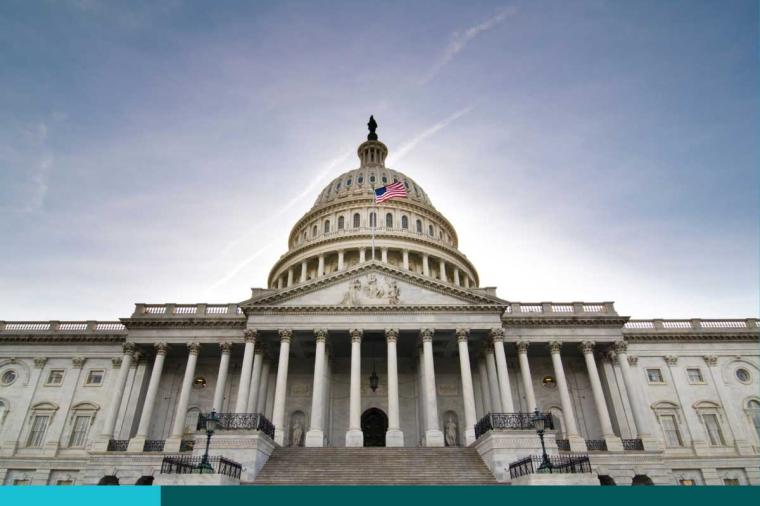Two New Federal Memos Embrace Emerging Tech and Efficiency in AI

In the first week of his administration, President Trump issued the “Removing Barriers to American Leadership in Artificial Intelligence” executive order (EO). It revoked the previously issued AI-focused EO from President Biden, and noted the need for the US to “sustain and enhance America’s global AI dominance”, with coordination among the APST, Special Advisor for AI and Crypto, the APNSA, and agencies to identify, suspend, revise or rescind “any actions taken pursuant to Executive Order 14110 that are or may be inconsistent with, or present obstacles to sustain and enhance America’s global AI dominance in order to promote human flourishing, economic competitiveness and national security.”
Fast forward to April, and we’re now seeing two new memos poised to provide revised policies on federal agency use of AI and procurement, updated guidance on adoption and more efficient procedures and the continued integration of emerging tech into federal agencies.
M-25-21
Memo 25-21 focuses on the use of AI “through innovation, governance and public trust.” In particular, there is strong focus on enhancing efficiency and eliminating bureaucratic restrictions that inhibit the ability for agencies to procure AI-related technology at a faster pace. Agencies are also charged with:
- Developing public AI strategies that elevate AI adoption and innovation as a priority, including establishing appropriate AI usage in decision-making processes.
- Maximizing the value of existing investments, sharing and reusing resources (data, models, code and assessments) to enable AI adoption.
- Using products developed and produced in the American marketplace.
- Developing and retaining a workforce with AI-focused expertise.
- Continuing to update agency AI use case inventories, compliance plans and reporting.
- Implementing AI risk management practices.
Of particular note to vendors, the memo states contracts for AI products and services should “consider contractual terms that prevent vendor lock-in and also protect Federal information used by vendors in the deployment and operation of AI.” It goes on to relay the further need for agencies to also document and test AI data, systems and effectiveness of the information used in fulfilling agency needs.
M-25-22
Memo 25-22 looks at agencies’ abilities to acquire AI responsibly through competition, tracking AI performance and risk and providing for cross-agency functionality. It replaces the previous administration’s AI memo M-24-18. Some notable call-outs to agencies include the need to:
- Revisit and update any upcoming acquisitions to be sure they comply with memos M-25-22 and M-25-21.
- Maximize the use of American-made AI products and services.
- Ensure data and AI privacy-related requirements are met, particularly related to PII.
- Comply with the upcoming GSA and OMB’s joint guide for AI acquisition and procurement.
- Determine necessary disclosures of AI use, especially in “high impact” uses.
For vendors and partners, it’s important to note the consistent restated need for “novel AI capabilities.” In the coming months, OMB will be developing what the government terms as play books for types of AI that will guide the need for and implementation of AI-based biometrics, specialized computing infrastructure and GenAI. There is also significant mention in the memo of the need for agencies to seek out product demonstrations, and utilize performance-based techniques across the government’s statements of objectives (SOOs), performance work statements (PWSs) and quality assurance surveillance plans (QASPs) for procurement.
What’s Next?
As agencies adopt this information, we anticipate seeing the above noted GSA playbooks published over the next 6 months, further guiding and fast-tracking the implementation of AI procurements. This also piggybacks on the administration’s continued push to align GSA as the central contracting authority. Vendors and partners can also expect to see more information on risk management, updates to contract clauses and greater overall adoption and ease of acquiring AI tech across the federal sector well into the coming fiscal years.
To get more TD SYNNEX Public Sector Market Insight content, please visit our Market Intelligence microsite.
About the Author:
Susanna Patten is a senior manager on the TD SYNNEX Public Sector Market Insights team covering tech trends across the Public Sector. Susanna has over 15 years of experience in public sector IT procurement. Her responsibilities at TD SYNNEX Public Sector include driving market intelligence asset production, ensuring the quality and relevance of deliverables from the Market Insights team, and aligning these insights with sales opportunities.


















